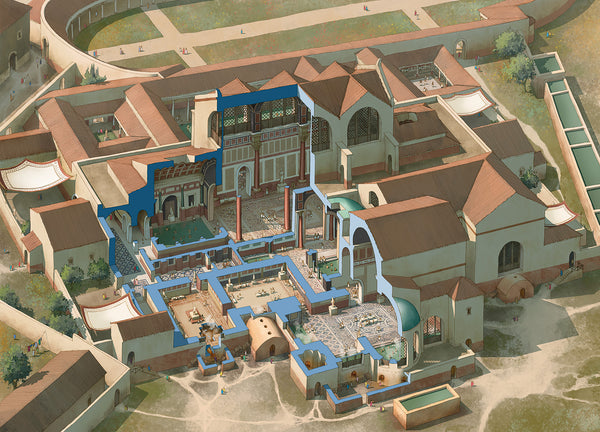Medieval Feast of the Suckling Pig
By Murray Dahm
In late summer in Bologna, the city held the Festa della porchetta or “Festival of the suckling pig”. On Saint Bartholomew's Day, 24 August, the city roasted a suckling pig as part of the commemoration of the end of an armed conflict between the Ghibelline and the Guelph factions in the city in 1278. The festival was then held every year until Napoleon conquered Bologna in 1796 (it was revived thereafter). The original circumstances of the festival seem to have been the accidental death of the Ghibelline leader, Antonin Lambertazzi, due to a runaway piglet.
The festival was depicted on multiple prints; more than a hundred were published in the seventeenth and eighteenth centuries. One print from 1697 shows the festival with armoured knights parading in the square and club-armed men chasing the piglet – who runs amok causing knights and warriors to fall over. The chase is accompanied by musicians (on a leopard-drawn chariot). Among the heraldry we see that of the Gonfaloniere (a senior administrator in the commune – named after the gonfalone or banners of the commune), and the city elders (the Anziani), that of Davia family chief among them, and the arms of the City of Bologna with its motto Libertas, “Freedom”. The feast was a celebration of Bologna civic pride as much as it was a feast. In the thirteenth century, Bologna was a free city or commune under the protection of the Pope and the city thrived – its population burgeoning from 10,000 in 1200 to 40,000 by 1348.
Another description of the festival survives in the writings of English traveller Charles Burney who published his account in 1770. He described an amphitheater built in the square (the Piazza Maggiore) where:
…peacocks, cocks, hens and money are thrown to the people and lastly a pig ready dressed. The Cardinal Legate attended in the balcony and threw money to the mob. The crowd was prodigious—stages built all around—and the windows and even tops of houses were crowded with people. It began by pageant, a kind of mock triumphal car, with ordinary girls dressed very fine in it, proceeded by others in procession. There was next represented the palace of Armida into which she conducted Rinaldo... a huge dragon comes out of the cave under the palace to attack them together with two griffins all spitting fire and made hideously frightful. [Rinaldo boards a vessels and sails away.]... More monsters appear all in flames and set fire to the palace whiles Armida flies away on a fiery dragon. The whole of this was comical enough—as it was all burlesque—sometimes the machinery of the monsters took fire and burnt the men underneath, upon which they throw off the whole apparatus and appear half-naked to the spectators. The scrambling for money, the poultry etc too afforded great diversion.
The festival was, therefore, accompanied by much pomp and pageant floats, pantomimes with mythical figures such as Armida and Rinaldo, monsters, and, inevitably, Bacchus, the god of wine, as well as tournaments, games, acrobatics, fireworks, and the opportunity for the largesse of the elders to be displayed.
Some depictions also show wine barrels and associate the festival with wine (although this is not common to all depictions or descriptions). Even though there would have been elaborate feasts in each of the wealthy houses whose palazzi boarded the square (and where tables would have been meticulously designed as ‘edible monuments’ to display wealth and status), the prints emphasise the public feast held in the square, usually in front of San Petronio, which dominates the Piazza.

In addition to the roast pig, fowl, bread, cheeses, and cakes were hung or thrown down from the balcony to feed the hungry Bolognese. Among the festivities, the chasing of a piglet around the square seems to have been the highlight. But other animals were chased, too, as evident in other visual sources: wild boars, bulls, and birds.
There were also Cuccagna trees – trees hung with food to evoke the land of Cockaigne (or Cockayne) where no one went hungry. Sometimes these ‘trees’ were greased poles festooned with food rewards for those who successfully scaled them. This connected the Bologna festival to the other, multiple Cockaigne festivals.
Issue 12 of Medieval World: Culture & Conflict includes this medieval festival, and many others! Check it out to learn more about how festivals in the Middle Ages brought people together around food, fun, and mockery, offering a much-needed break from daily routines.

